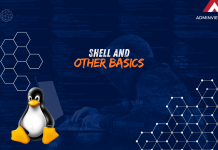Trong bài viết này tôi sẽ hướng dẫn các bạn cách cài đặt một webserver sử dụng Apache2 trên CentOS 7 hỗ trợ PHP5 (mod_php) và MySQL . LAMP là từ viết tắt của Linux,Apache MySQL,PHP.
Bài viết gồm các phần
- Preliminary Note
- Installing MySQL 5
- Installing Apache2
- Installing PHP5
- Testing PHP5 / Getting Details About Your PHP5 Installation
- Getting MySQL Support In PHP5
- phpMyAdmin installation
1 Preliminary Note
Trong bài này tôi sử sụng máy CentOS 7 với hostname là server.adminvietnam.org có địa chỉ IP là 172.16.1.254 . Các thiết lập này là khác nhau , nên bạn có thể chỉnh sửa cho phù hợp
Trước tiên tôi sẽ cài đặt EPEL-7
rpm -ivh http://dl.fedoraproject.org/pub/epel/7/x86_64/e/epel-release-7-6.noarch.rpm
2 Installing MySQL 5
Để cài đặt MySQL , tôi sẽ cài đặt mariadb như sau
yum -y install mariadb-server mariadb
Sau đó tôi sẽ tạo một liên kết khởi động cho MySQL (cho phép MySQL khởi động cùng hệ thống ) và khởi động MySQL server
systemctl start mariadb.service systemctl enable mariadb.service
Đặt password cho tài khoản root MySQL
mysql_secure_installation
[root@server /]# mysql_secure_installation /usr/bin/mysql_secure_installation: line 379: find_mysql_client: command not found NOTE: RUNNING ALL PARTS OF THIS SCRIPT IS RECOMMENDED FOR ALL MariaDB SERVERS IN PRODUCTION USE! PLEASE READ EACH STEP CAREFULLY! In order to log into MariaDB to secure it, we'll need the current password for the root user. If you've just installed MariaDB, and you haven't set the root password yet, the password will be blank, so you should just press enter here. Enter current password for root (enter for none): <--ENTER OK, successfully used password, moving on... Setting the root password ensures that nobody can log into the MariaDB root user without the proper authorisation. Set root password? [Y/n] y New password: <--password mariadb của bạn Re-enter new password: Password updated successfully! Reloading privilege tables.. ... Success! By default, a MariaDB installation has an anonymous user, allowing anyone to log into MariaDB without having to have a user account created for them. This is intended only for testing, and to make the installation go a bit smoother. You should remove them before moving into a production environment. Remove anonymous users? [Y/n] <--ENTER ... Success! Normally, root should only be allowed to connect from 'localhost'. This ensures that someone cannot guess at the root password from the network. Disallow root login remotely? [Y/n] <--ENTER ... Success! By default, MariaDB comes with a database named 'test' that anyone can access. This is also intended only for testing, and should be removed before moving into a production environment. Remove test database and access to it? [Y/n] <--ENTER - Dropping test database... ... Success! - Removing privileges on test database... ... Success! Reloading the privilege tables will ensure that all changes made so far will take effect immediately. Reload privilege tables now? [Y/n] <--ENTER ... Success! Cleaning up... All done! If you've completed all of the above steps, your MariaDB installation should now be secure. Thanks for using MariaDB!
3 Installing Apache2
Tiếp theo tôi cài đặt Apache2 , Apache2 thường sẽ có sẵn trên CentOS 7
yum -y install httpd
Bây giờ cấu hình cho Apache2 khởi động cùng hệ thống
systemctl start httpd.service systemctl enable httpd.service
Trên CentOS 7 sử dụng Firewall-cmd nên tôi sẽ tùy chỉnh cho phép truy cập từ bên ngoài đến port 80 (HTTP) và port 443 (HTTPS)
firewall-cmd --permanent --zone=public --add-service=http firewall-cmd --permanent --zone=public --add-service=https firewall-cmd --reload
Tôi sẽ kiểm tra thử bằng cách truy cập tới địa chỉ http://yourip (ví dụ : http://172.16.1.254)

4 Installing PHP5
Chúng ta có thể cài dặt PHP5 và module Apache PHP5 như sau
yum -y install php
Sau khi cài đặt hoàn tất tôi khởi động lại Apache
systemctl restart httpd.service
5 Testing PHP5 / Getting Details About Your PHP5 Installation
Mặc định các file gốc của trang web sẽ nằm trong /var/www/html , bây giờ tôi sẽ tạo 1 file PHP nhỏ (info.php) , file này sẽ hiển thị một số thông tin rất hữu ích như số phiên bản PHP đã được cài đặt …v …v
nano /var/www/html/info.php
<?php phpinfo(); ?>
Tôi sẽ kiểm tra file trên bằng cách truy cập đến địa chỉ http://yourip/info.php (ví dụ : http://172.16.1.254/info.php)

6 Getting MySQL Support In PHP5
Để MySQL hỗ trợ trên PHP ta có thể cài gói php-mysql , ta cũng có thể cài một số module PHP5 khác cần thiết , có thể tìm các module PHP5 khác như sau
yum search php
Chọn 1 cái bạn cần và cài đặt nó
yum -y install php-mysql
Khởi động lại Apache2
systemctl restart httpd.service
7 phpMyAdmin installation
Với phpMyAdmin bạn có thể quản lý cơ sở dữ liệu MySQL thông qua giao diện web
Tôi có thể cài đặt phpMyAdmin như sau
yum install phpMyAdmin
Tiếp theo tôi sẽ cấu hình phpMyAdmin . Tôi sẽ chỉnh sửa Apahe để cho phép các kết nối đến phpMyAdmin không chỉ từ localhost
nano /etc/httpd/conf.d/phpMyAdmin.conf
Alias /phpMyAdmin /usr/share/phpMyAdmin Alias /phpmyadmin /usr/share/phpMyAdmin #<Directory /usr/share/phpMyAdmin/> # <IfModule mod_authz_core.c> # # Apache 2.4 # <RequireAny> # Require ip 127.0.0.1 # Require ip ::1 # </RequireAny> # </IfModule> # <IfModule !mod_authz_core.c> # # Apache 2.2 # Order Deny,Allow # Deny from All # Allow from 127.0.0.1 # Allow from ::1 # </IfModule> #</Directory> <Directory /usr/share/phpMyAdmin/> Options none AllowOverride Limit Require all granted </Directory>
Tiếp theo tôi sẽ khởi động lại Apache2
systemctl restart httpd.service
Sau khi khởi động lại bạn có thể kết nối đến phpMyAdmin bằng cách truy cập đến http://yourip/phpMyAdmin (ví dụ : http://172.16.1.254/phpMyAdmin)

Để đăng nhập các bạn dùng username là root và password đã tạo ở phần 2 .

LuanPM-Adminvietnam.org







